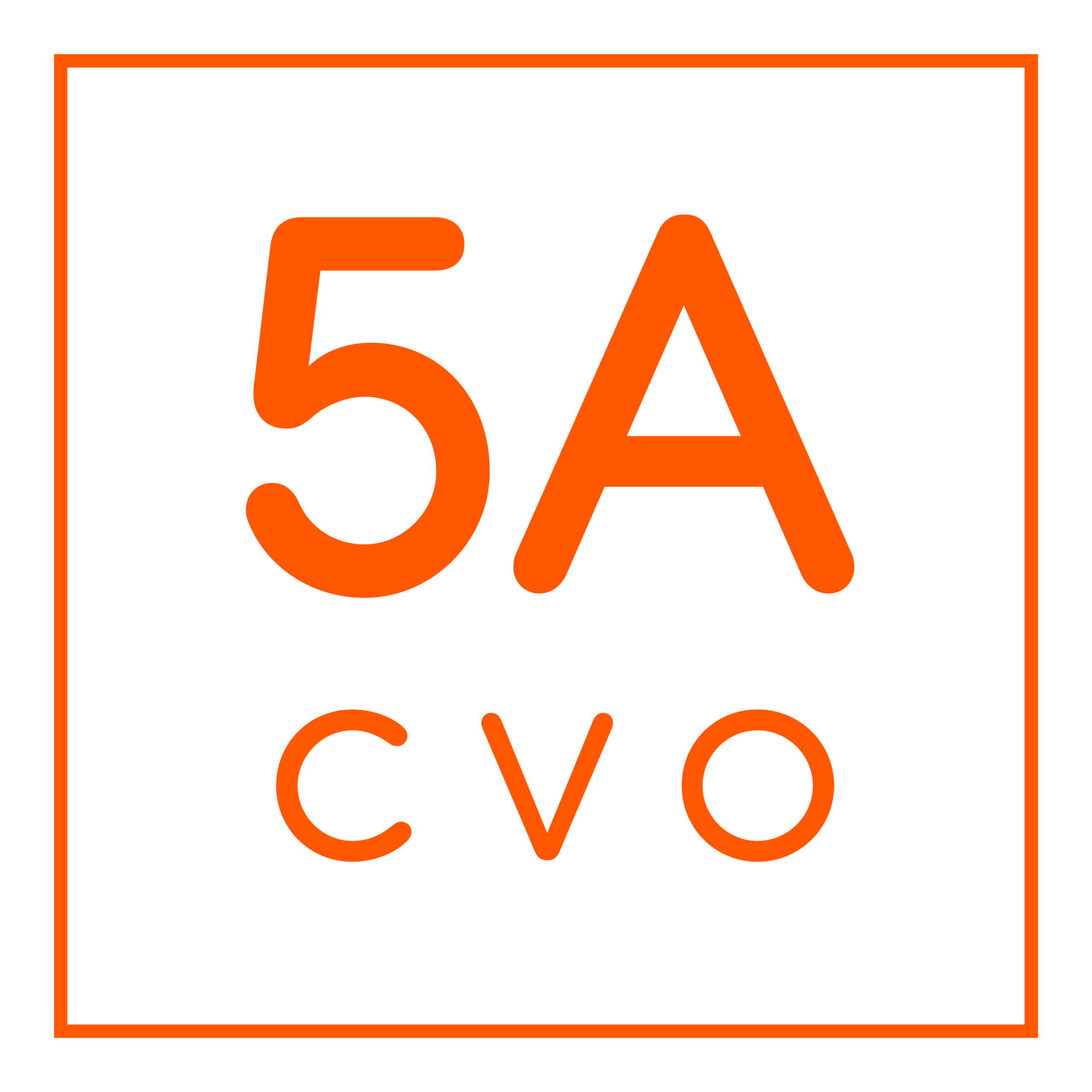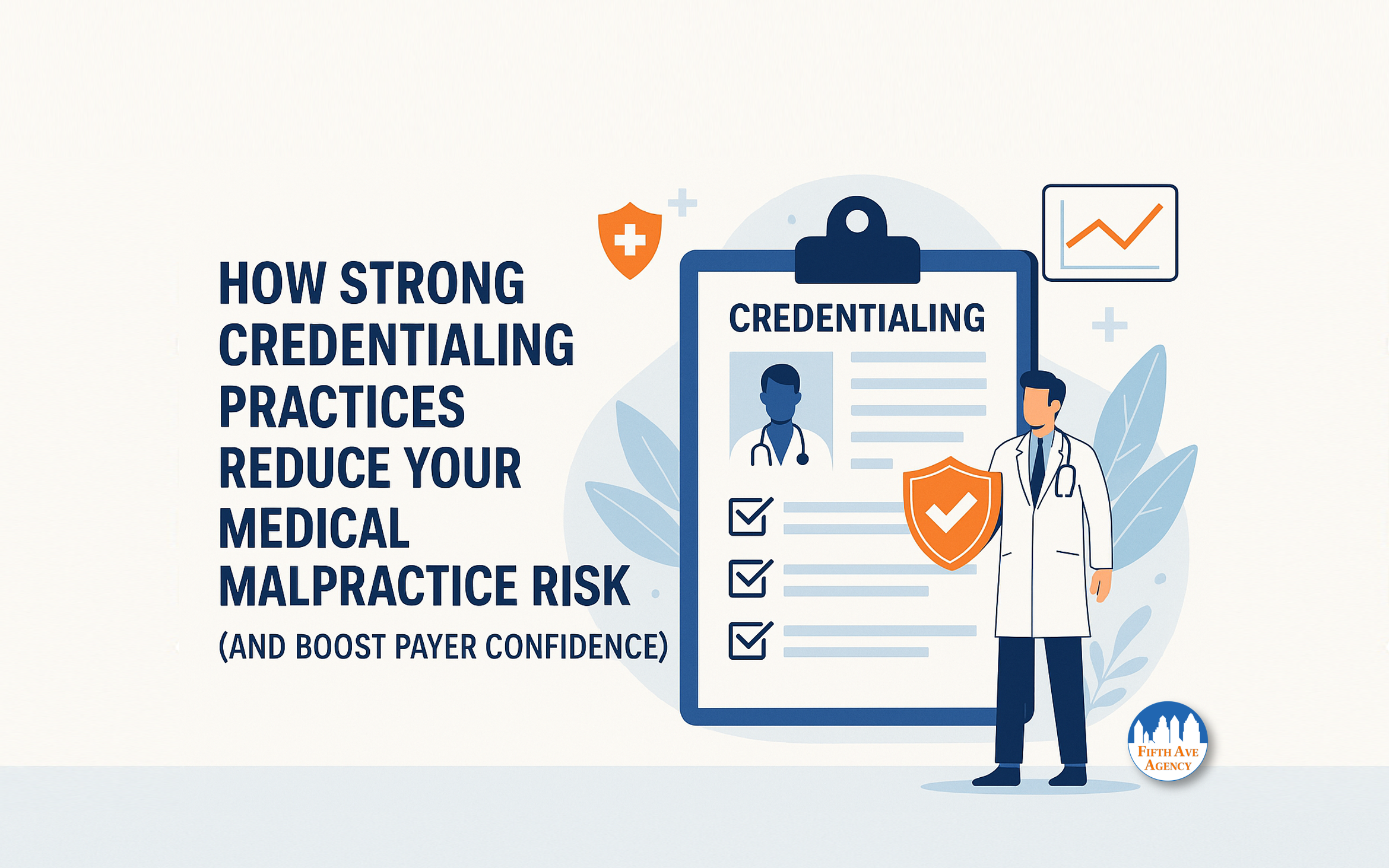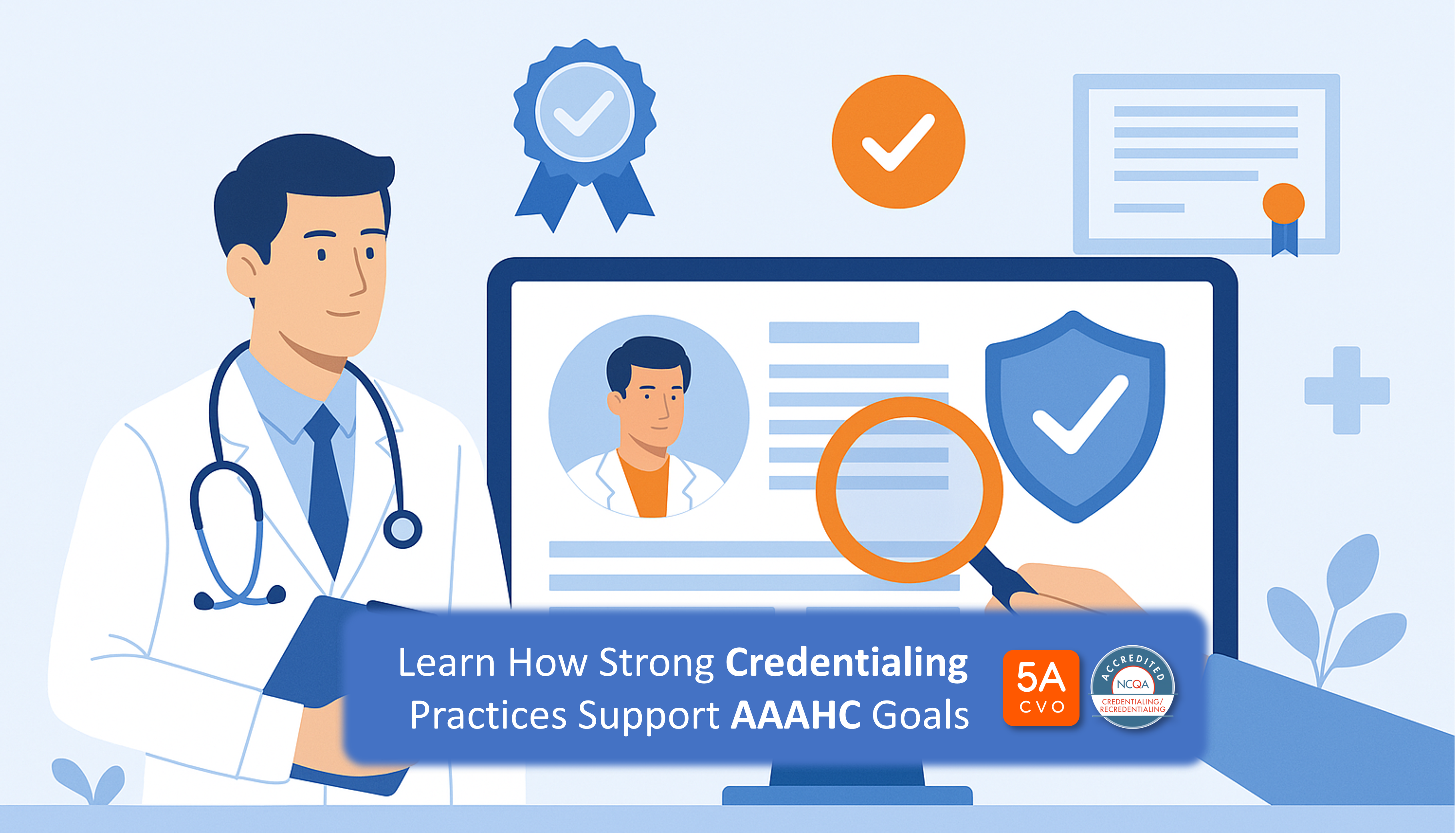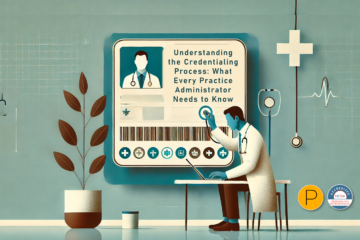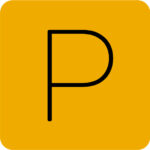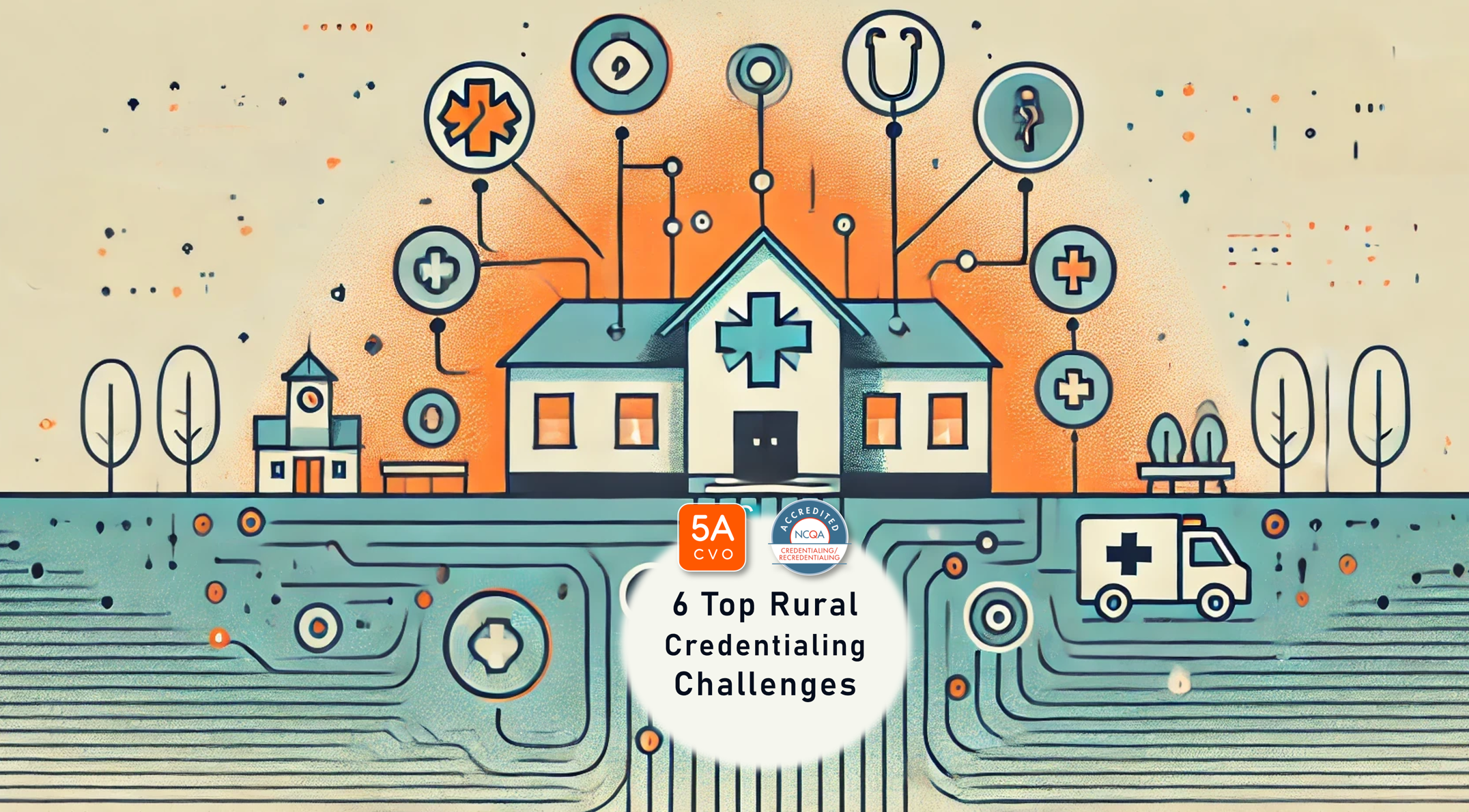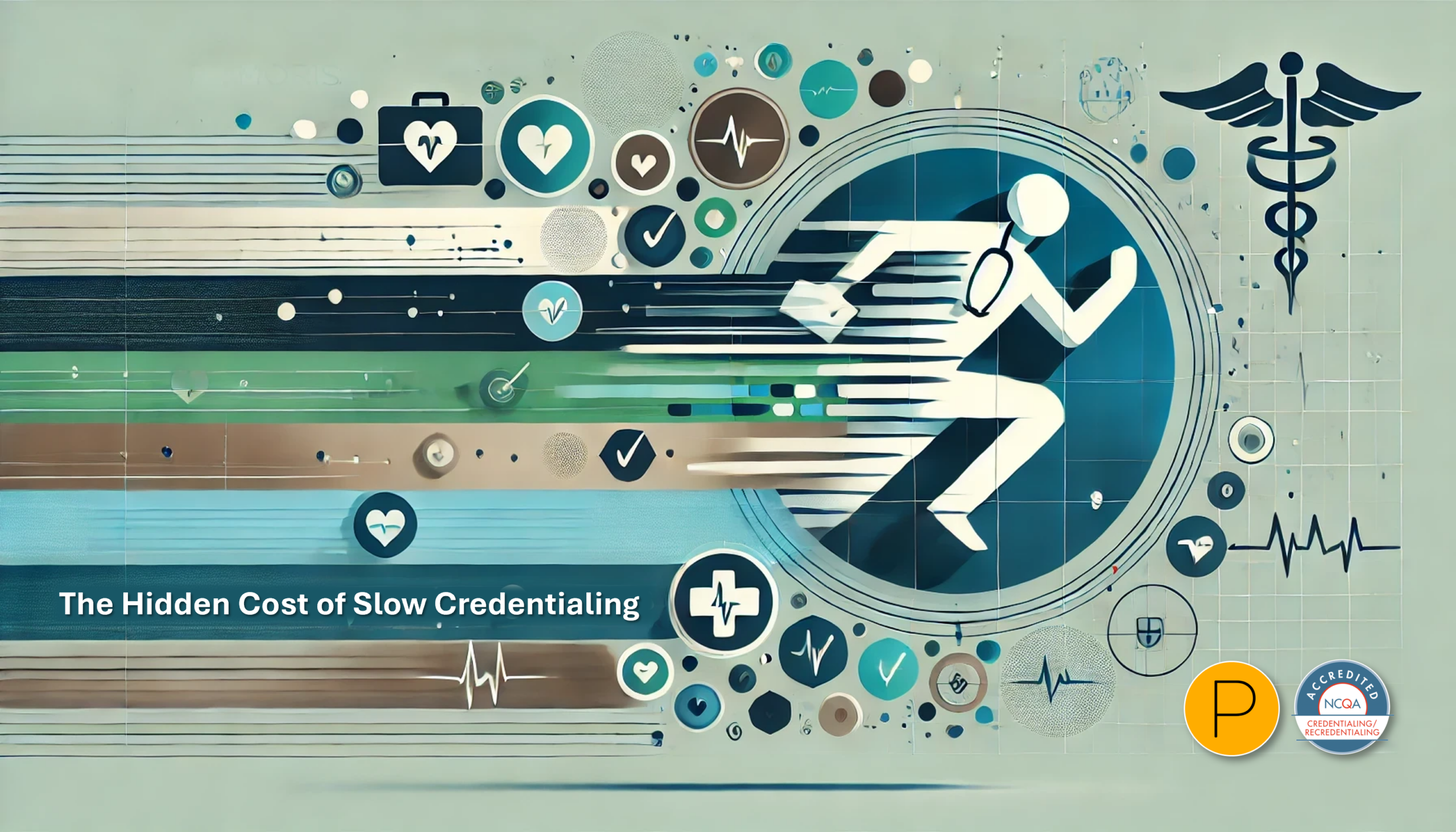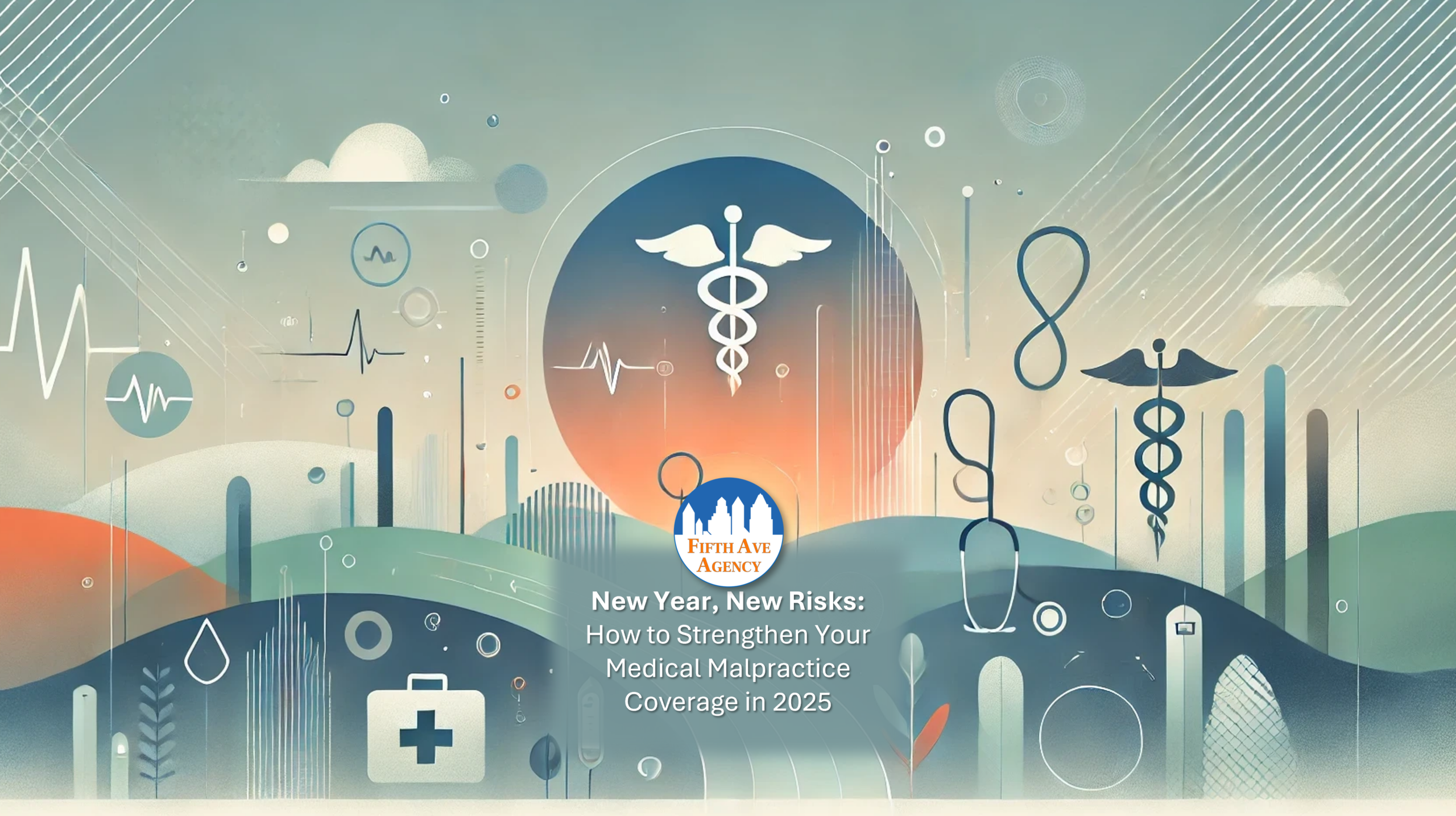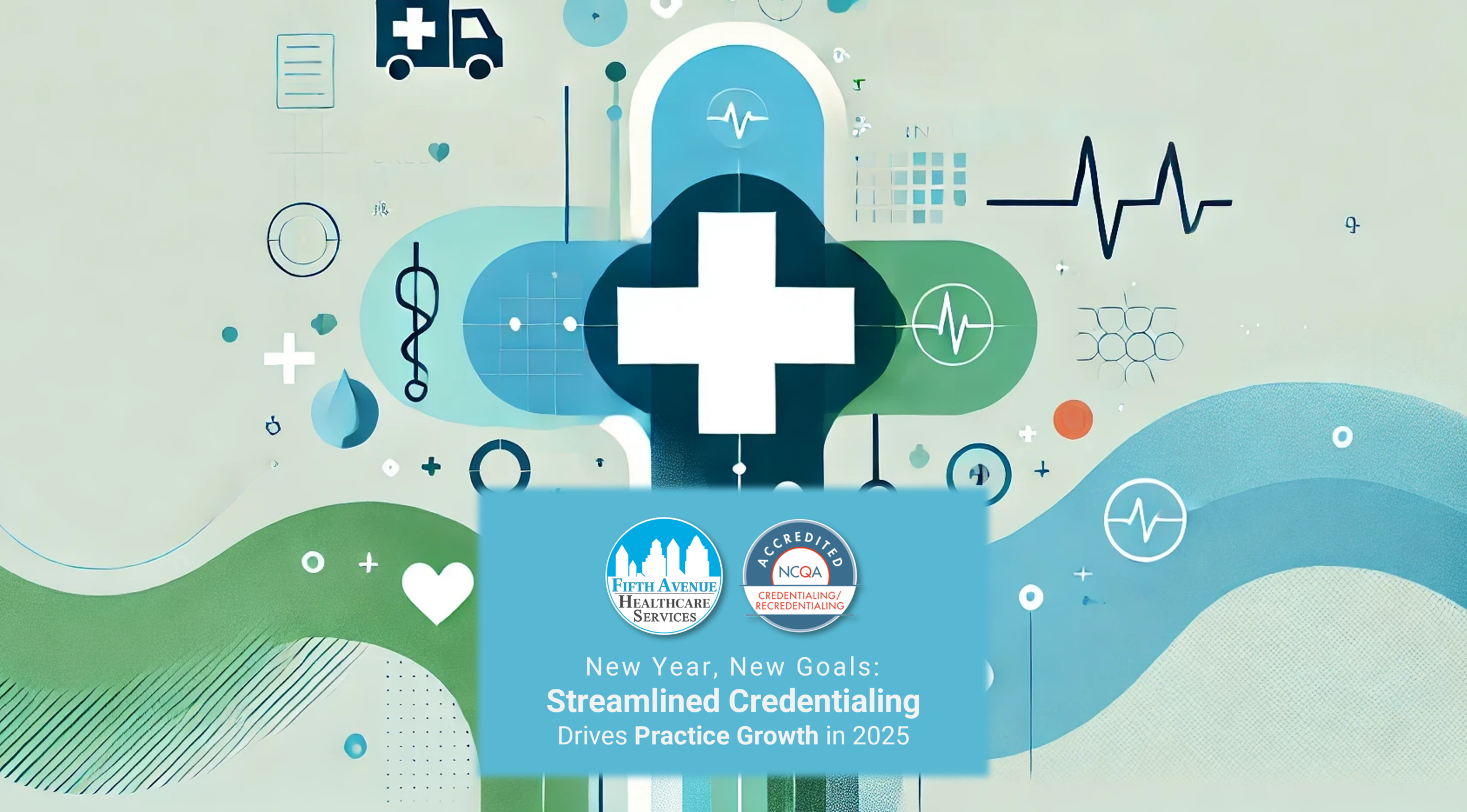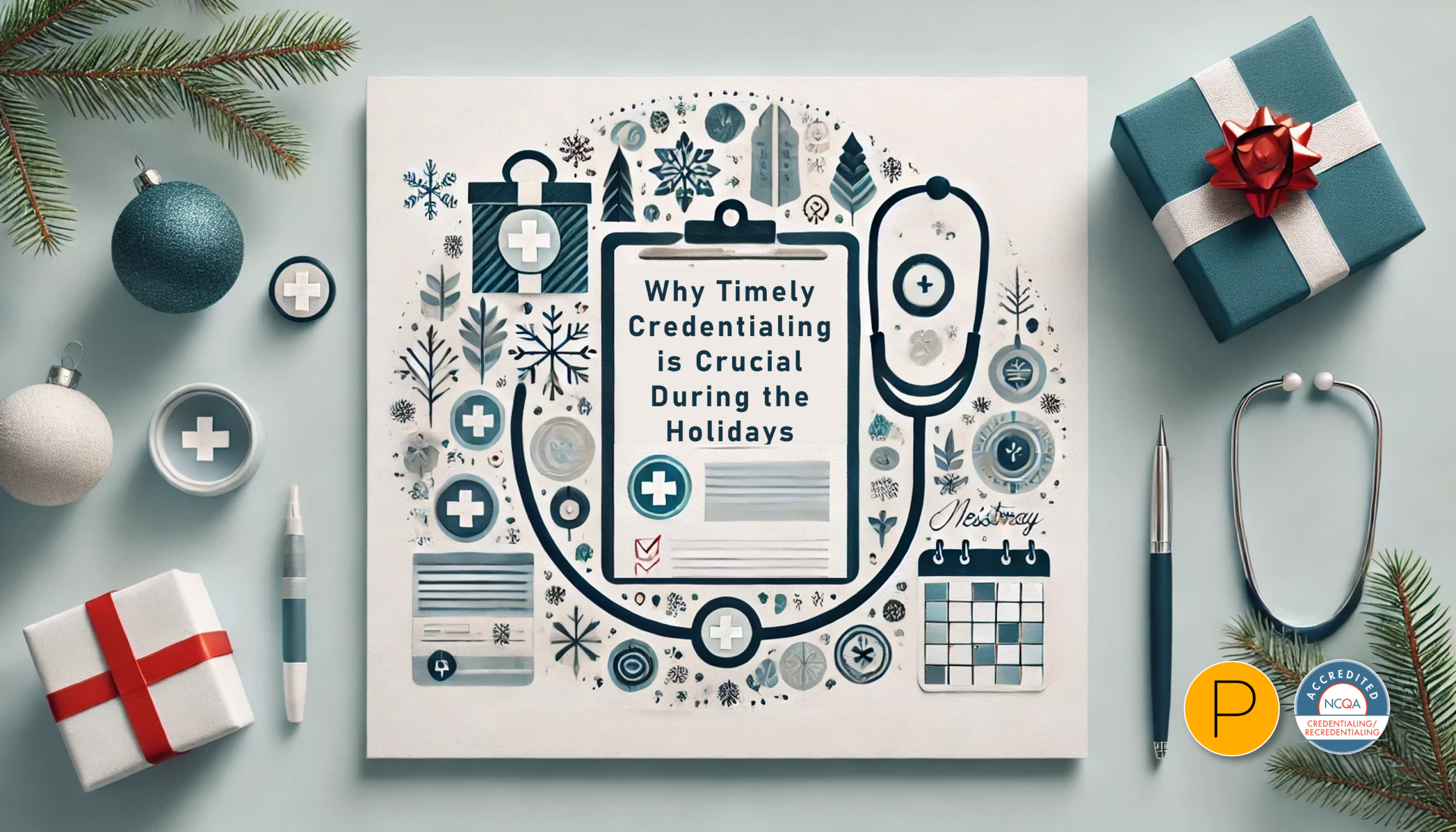Time is money may be a cliché to some, but it’s a hard truth for others—especially those in the healthcare industry. Many medical organizations are losing the battle to balance expenses and revenue. Unfortunately, most of them overlook one area where they could be cutting costs by obtaining faster credentialing at a lower credentialing cost. Verifying a healthcare provider’s certifications and experience is a necessary evil. It’s a long, expensive process, but a thorough credentialing procedure protects the medical organization from litigation should an employed provider commit medical malpractice.
Traditionally, in-office credentialing (done by the organization’s staff) has long been a painful procedure that delays when a provider can start seeing patients and begin billing. This delay postpones revenue that the hiring organization could receive sooner. Bills and salaries don’t wait to be paid simply because a new doctor can’t start until three months from now.
Why does credentialing cost so much? Why does it take so long to complete? Those are two critical questions, but one question outweighs them both: is there a way to obtain faster credentialing at less cost? The answer: absolutely!
Slow Credentialing Costs Money
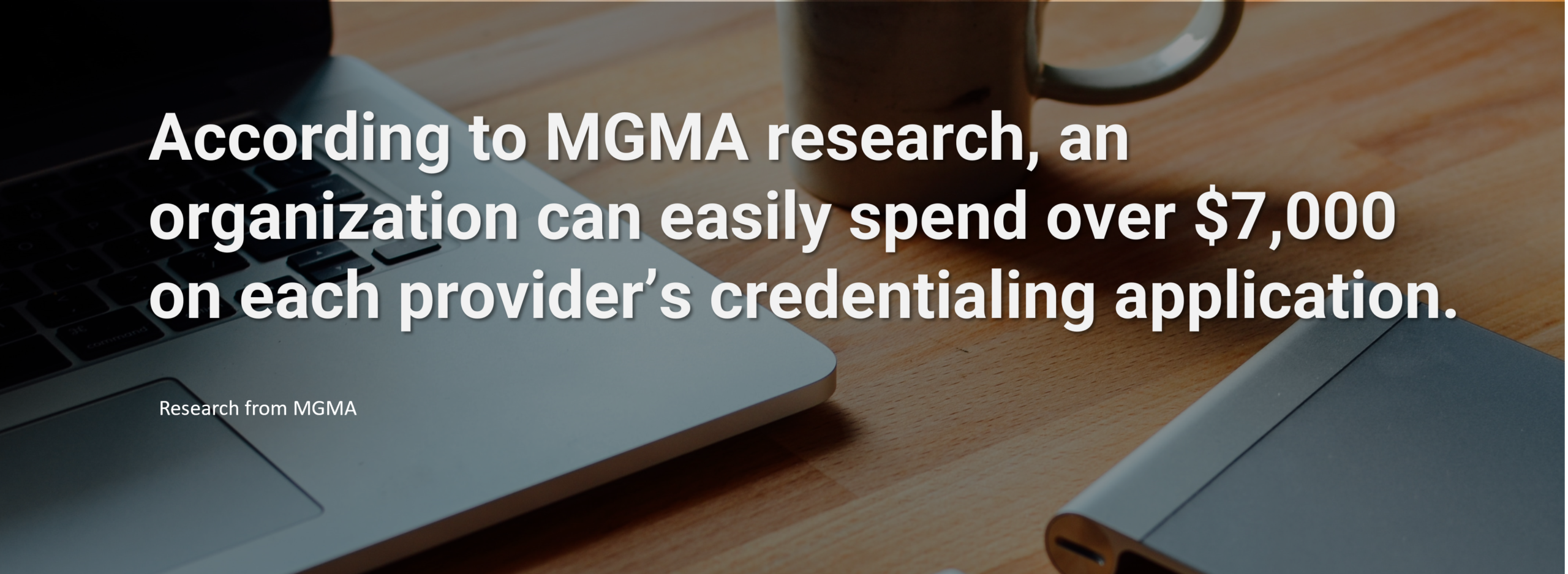
Let’s look at average in-office credentialing costs on a perfect day:
- Employing an in-office credentialing specialist costs a practice (on average) over $70,000 a year in salary and benefits. An experienced specialist will demand higher pay, usually over $100,000+ a year.
- Credentialing computer software can start at around $400 a month per TrustRadius.
- Paperwork costs money. The average office worker uses around 10,000 sheets of copy paper per year; now, multiply that total by the number of employees on staff. This amount doesn’t include other office supplies like pens, staples, paper clips, supplies, and storage needs, which cut into revenue.
- According to MGMA research, an organization can easily spend over $7,000 on each provider’s credentialing application.
- Lastly, factor in the revenue a practice loses because the provider isn’t seeing patients and generating income, which can significantly impact a practice’s bottom line.
Average annual totals for provider revenue vary based on their specialties:
- A primary care physician generates around $1.5 million in revenue for their organization.
- An orthopedist can generate $2.7 million.
- A cardiologist brings in $2.4 million.
- A neurosurgeon generates $2.2 million.
A medical organization won’t see this money until the provider is credentialed. Until the provider completes the process, practices can lose millions of dollars in potential revenue.
Practices lose even more money when their in-office credentialing hits a snag, such as clerical errors, typos, and missing forms. The staff, their credentialing skills, and work attendance significantly affect the process. Their speed and accuracy help dictate when a provider can start treating patients and generating revenue.
Conventional Credentialing Takes To Long
A standard credentialing process takes an average of 90-120 days—this is not faster credentialing! Ninety days is still too long for medical organizations to wait. They need to get paid to remain solvent, especially with the recent pressure of the pandemic.
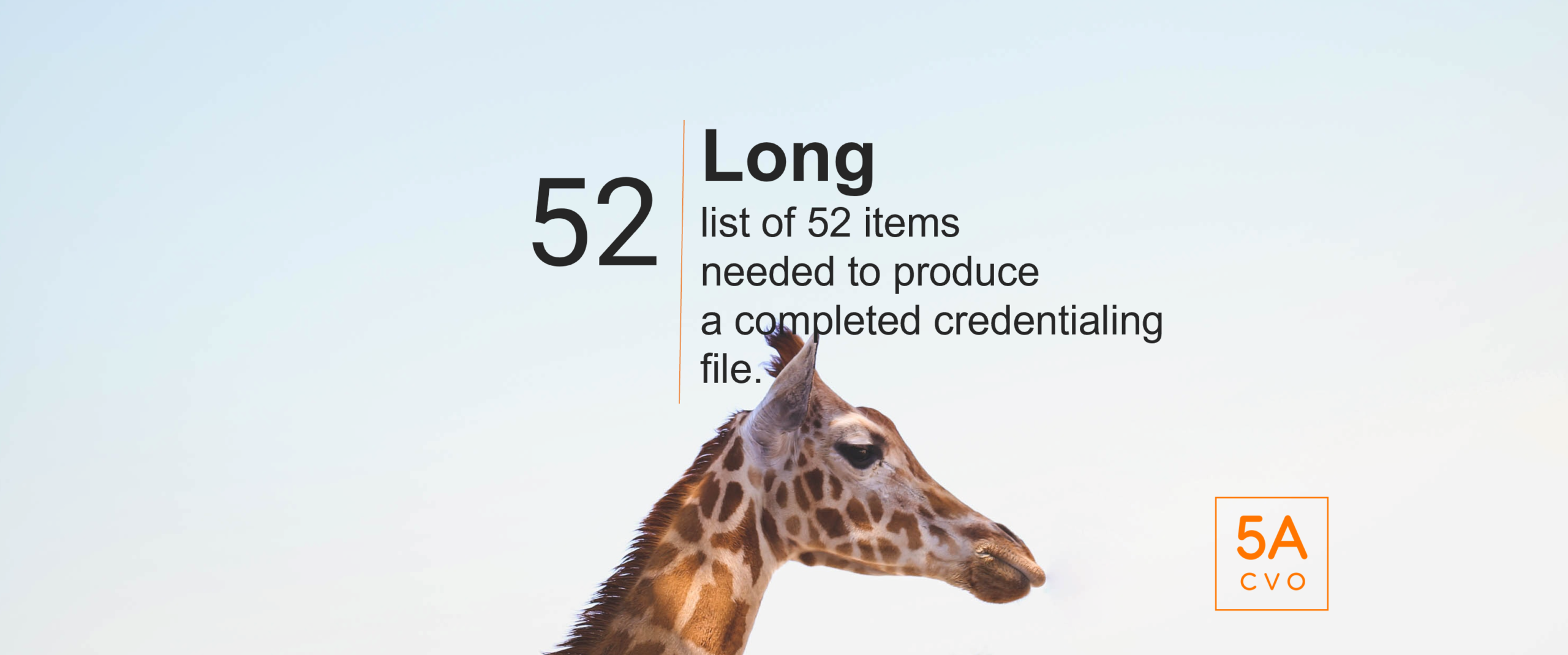
Here are some of the core 52 conventional credentialing steps, including:
- Sending, tracking, and receiving the provider application packet.
- Obtaining the provider’s release so the credentialing agency can access the provider’s information.
- Obtaining privilege forms (privileging authorizes a licensed or certified healthcare provider’s specific area of patient care services).
- Reviewing the disclosure’s questions and answers.
- Reviewing the explanations of employment gaps and claims history.
- Reviewing medical malpractice claims history.
- Obtaining applicable certificate copies of Board, ECFMG, Medical School, Internship, Residency, Fellowship, and two years CME.
- Obtaining copies of government-issued photo ID, DEA, and CDS.
- Obtaining copies of CPR, ACLS, and PALS certificates.
- Obtaining TB, MMR, varicella, and flu vaccination records.
- Attesting any conflict of interest.
- Ordering a criminal background check.
- Obtaining an Allied Health Professional’s Supervising Physician’s Statement.
If problems arise during these steps, the process can easily stretch past the 120-day window, reducing any chance of faster credentialing. Unfortunately, this delay can deprive the medical practice of revenue the provider could bring in during that time.
Organizations that perform in-house credentialing are often wasting their time. Outsourcing the job to a credentials verification organization (CVO) like 5ACVO.com can reduce the number of steps by 88%. They can process primary source verifications much faster than in-house methods, sometimes allowing providers to start billing one month after beginning the process. Reducing conventional credentialing steps from 52 to 6 simple steps is smarter and faster credentialing!
Faster Credentialing at 69% Less Credentialing Cost
5ACVO offers healthcare providers and organizations faster credentialing and reduces credentialing costs. 5ACVO takes the traditional 52 conventional credentialing steps and reduces the process to six (6) simple steps to complete your provider credentialing process! Expediting the process from months to weeks allows providers to see patients sooner and begin billing, generating revenue for themselves and their organizations.
Here are a few things a CVO can eliminate from a provider’s to-do list:
- Initial and reappointment application distribution
- Initial and reappointment primary source verification
- Reappointment scheduled maintenance
- Criminal background checks
- Maintaining compliance and ongoing monitoring
Credentialing With A CVO Is 5-7 Days Faster
According to NAMSS, an average CVO handles credentialing 5 to 7 days faster than a medical facility. 5ACVO can get it done even quicker.
In addition to streamlining the accrediting workflow, 5ACVO’s credentialing team has 385+ years of industry experience. 63% of the team has 10+ years of experience, and 44% have 20+ years of experience; this efficient team only performs credentialing services. Their laser focus results in quicker turnarounds so that providers can see patients sooner and begin billing and generating revenue faster.
In addition, 5ACVO’s sister company, Primoris Credentialing Network, can enroll providers in a health plan or network so providers can get reimbursed for services performed to patients, often with ONE application. Primoris has + health plans and network options available. This incredible benefit speeds up onboarding and billing.
Here are a few real-life examples illustrating the value 5ACVO can add to your organization:
- One provider completed his fellowship on July 31st. His file was finished and held until that date. The provider was verified and approved on that date, enabling them to bill on most of the health plans before his start date of August 15th.
- Another provider completed their residency before it ended on June 30th. The Fifth Avenue Healthcare Services team obtained a letter from the provider’s program director and pushed them through. As a result, they were billing on nearly all health plans as of their start date of July 1st.
- A provider moved from one group to another. We added them to the new group with all plans in one week.
- A provider was joining a medical group on March 1st. They completed their application on January 3rd. The provider was processed and approved by February 6th and began billing with all plans by that March 1st date.
A CVO With A Proven Track Record
5ACVO’s track record speaks for itself. 5ACVO will provide medical practices with substantial savings — 69% lower costs and 88% less work. 5ACVO also provides their clients simple access to their credentialing data. Clients will have ONE point of contact with ONE email and ONE phone number. These solutions offer superior flexibility and convenience you can’t enjoy anywhere else.
The benefits don’t stop with providers and their practices because patients will also reap the rewards.
These three bonuses can decrease patient wait time and increase patient satisfaction:
- Buy better equipment.
- Hire more providers.
- Open more facilities.
Time is money, and conventional credentialing costs a lot of both. Smart credentialing saves both and gives both back to providers, the medical organizations that hire them, and the patients who require care.
More information about 5ACVO
5ACVO is an NCQA Credentialing Accredited specializing in credentialing and primary source verification and is part of the Fifth Avenue Healthcare Services family. 5ACVO sister companies include Fifth Avenue Agency (MPLI and medical malpractice insurance specialists) and Primoris Credentialing Network (credentialing and provider enrollment specialists with 54+ health plan and network provider enrollment options).
For more information on 5ACVO, please visit 5ACVO.com or Contact Us.
